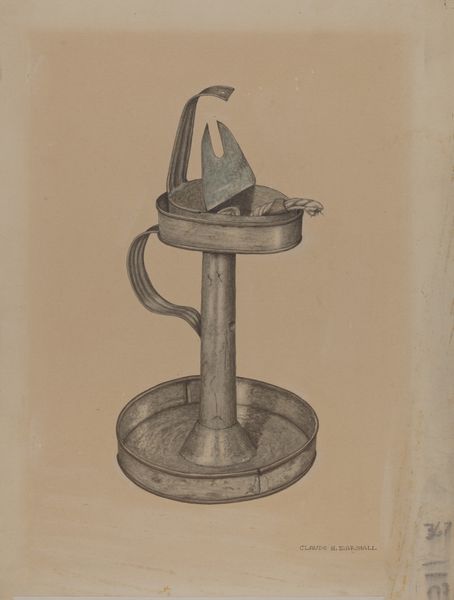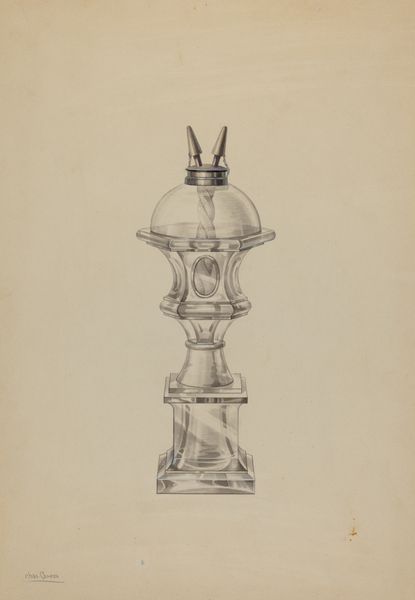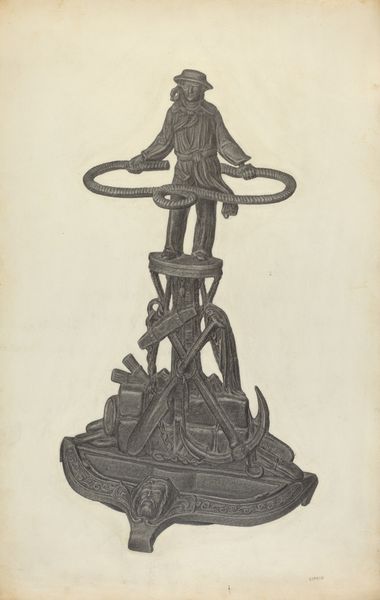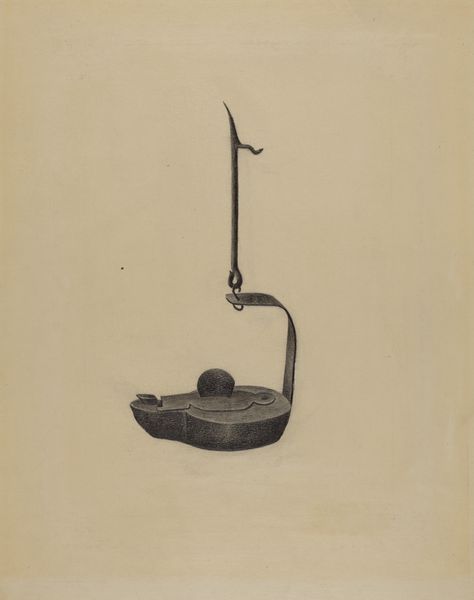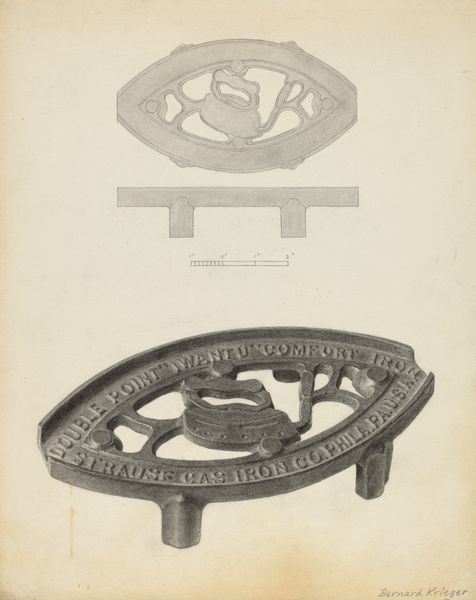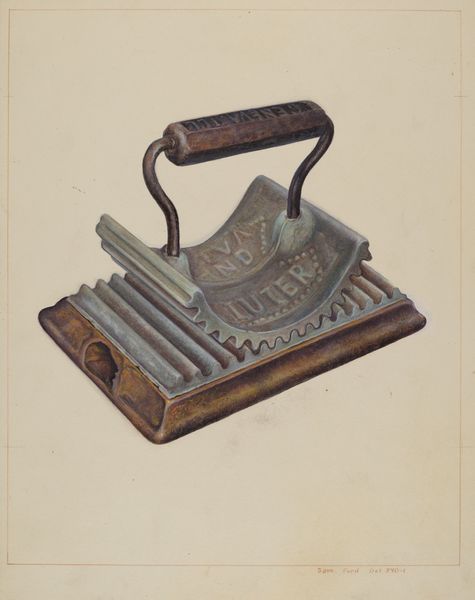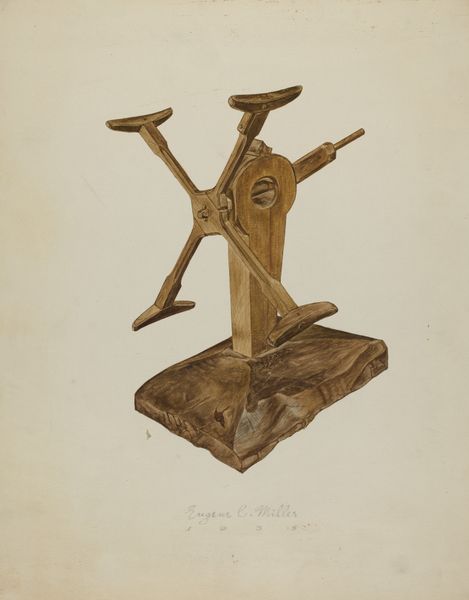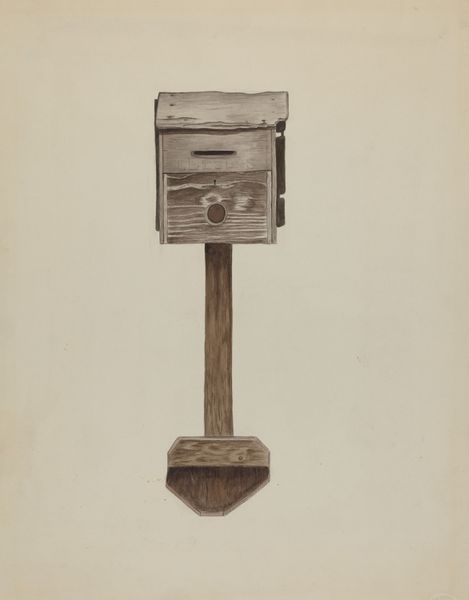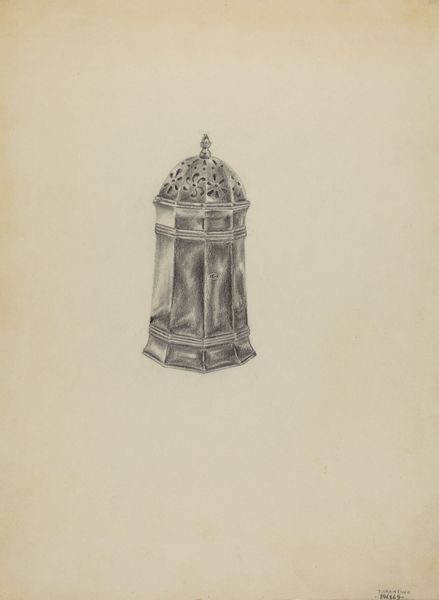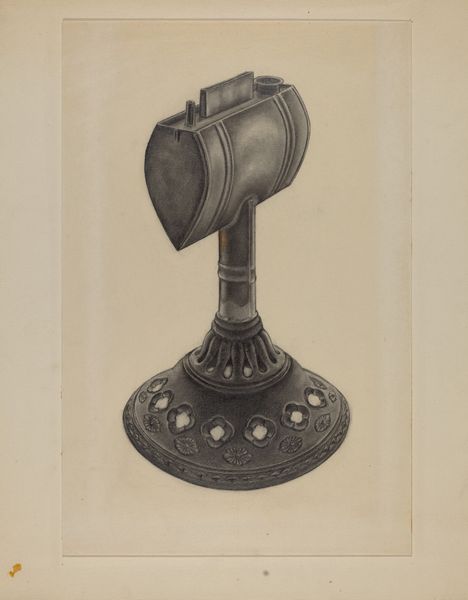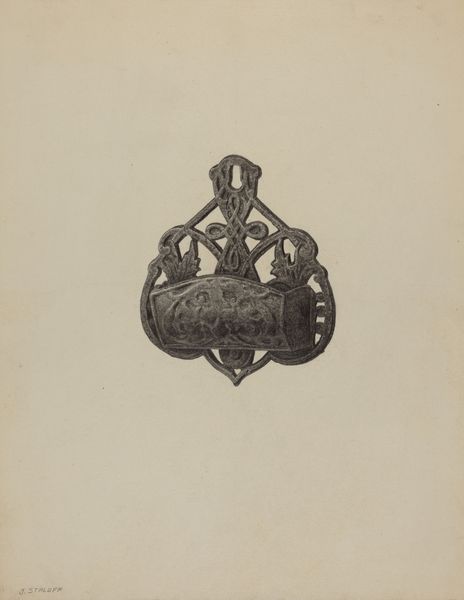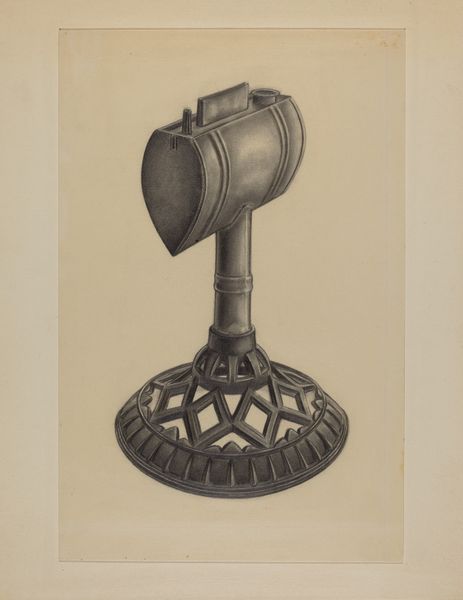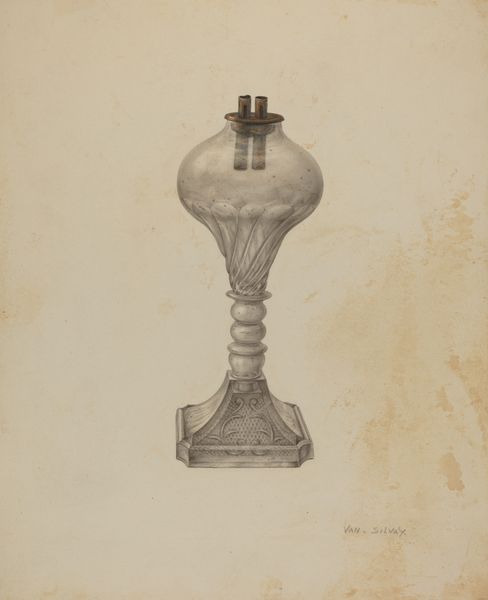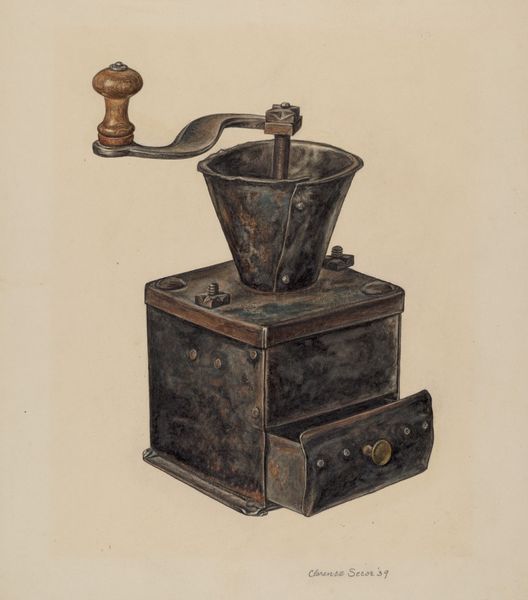
drawing, pencil
#
drawing
#
pencil drawing
#
pencil
Dimensions: overall: 40.7 x 36.1 cm (16 x 14 3/16 in.) Original IAD Object: 9 3/8" high; 7 1/2" wide; 5 1/2" deep
Copyright: National Gallery of Art: CC0 1.0
Curator: This detailed pencil drawing, entitled "Stove Urn," dates back to around 1939, courtesy of Milton Grubstein. Its fine lines and shading bring a utilitarian object to life on paper. Editor: My first impression is one of unexpected monumentality. Despite clearly being a drawing of a domestic object, its careful depiction imbues it with a rather grand, almost ceremonial presence. Curator: Absolutely. Grubstein's command of shading, combined with the sharp geometric planes, creates an illusion of sculpted form, echoing the language of architectural rendering more than product design. Editor: And look at the details rendered in pencil. The urn’s lid, perforated with what looks like a repeating motif, is almost decorative. This elevates the function beyond merely heating, gesturing towards ritual and craft practices. Curator: One could certainly interpret that repeating pattern on the lid through a semiotic lens—perhaps seeing an encoded emblem representing heat, flame, or the flow of air. I find the eagle on top fascinating. Editor: I find it peculiar. What is it made out of and how did he obtain it? Was this cast iron or perhaps another affordable but workable material accessible during that era? Knowing that process makes the drawing all the more compelling for me. The economic conditions surrounding this work of art have informed what the artist was making. Curator: Interesting. Perhaps. Although for me, this work stands on the merits of its meticulous technique and formal symmetry; I find its social and economic context to be far less interesting. Editor: I understand that impulse to focus on form. But ignoring how utilitarian objects blend the artistic vision and production obscures art history. Curator: Perhaps, but considering the clear talent on display through its tone and shadowing and perspective, the importance to the artform can be easily enjoyed without consideration of economics. The work displays a formal balance, especially considering it's rendered with such precision in a relatively humble medium like pencil. The composition truly stands alone. Editor: Indeed, the drawing certainly transcends the limitations of its medium and allows me to contemplate art as informed by necessity, ingenuity and resourcefulness. Curator: A valid point. I leave with a deepened appreciation for Grubstein's compositional skill and his technical command of an underappreciated medium.
Comments
No comments
Be the first to comment and join the conversation on the ultimate creative platform.
